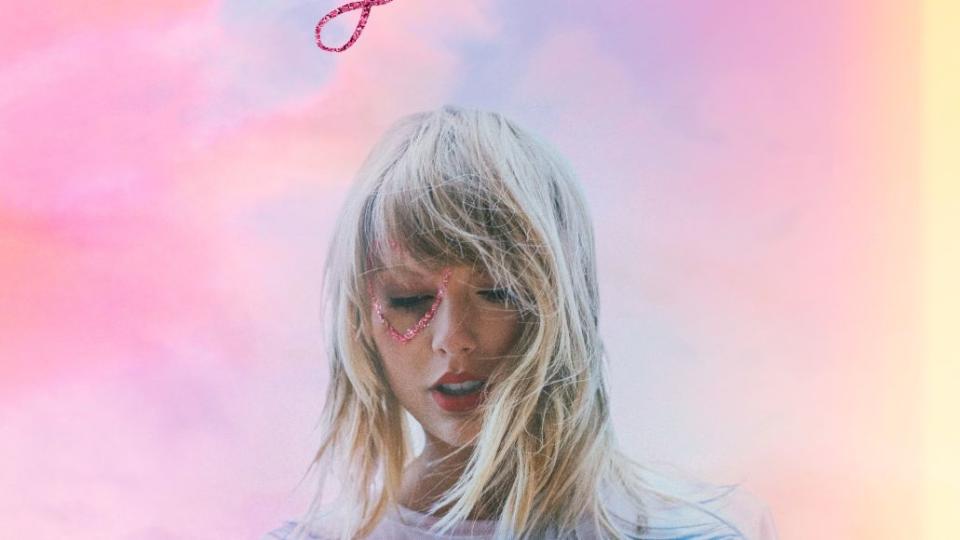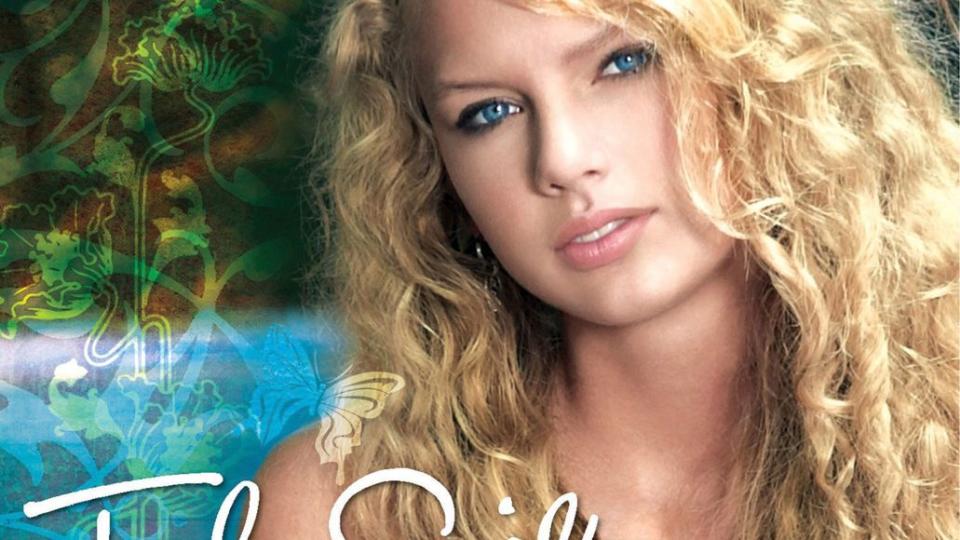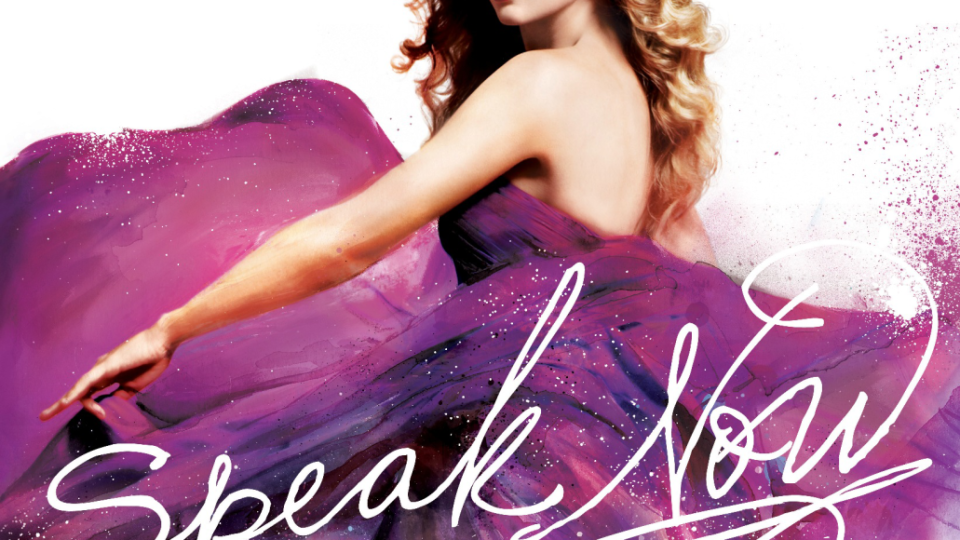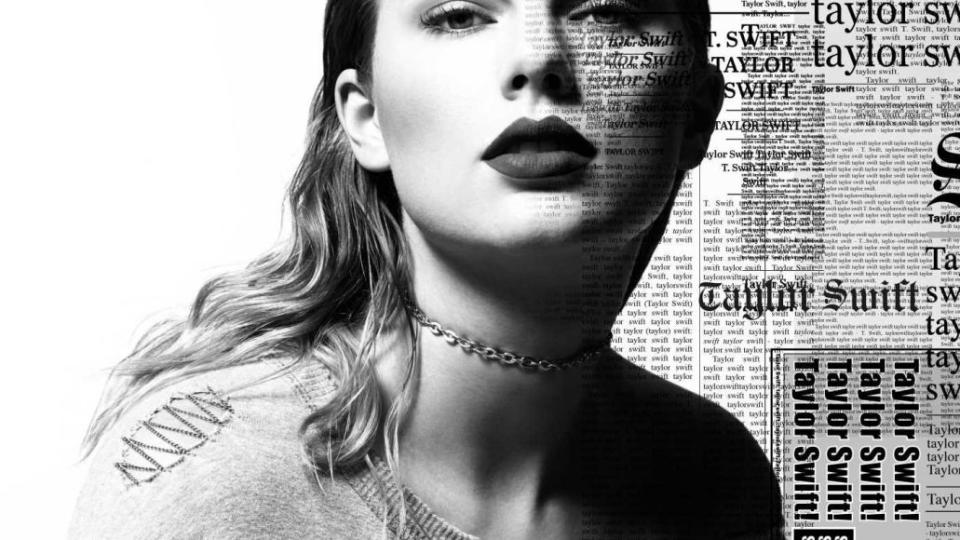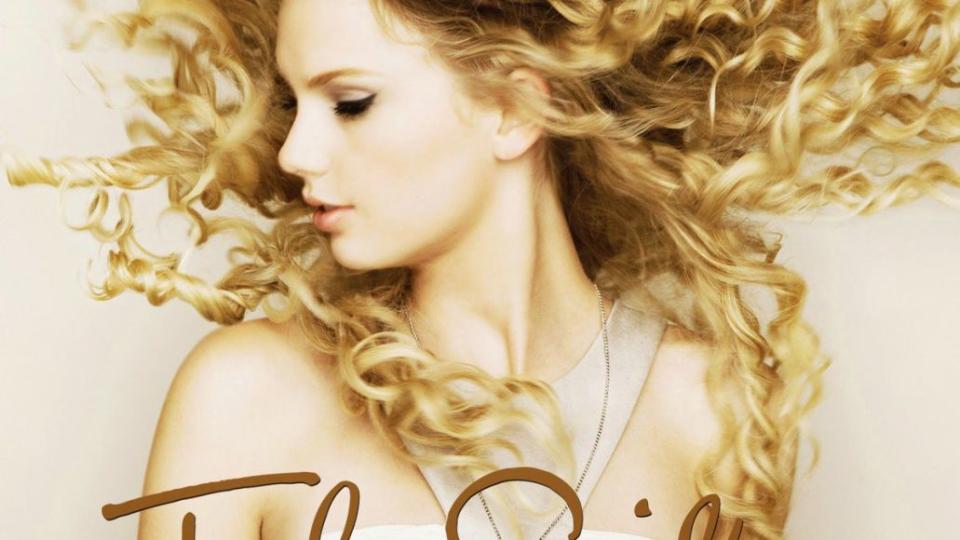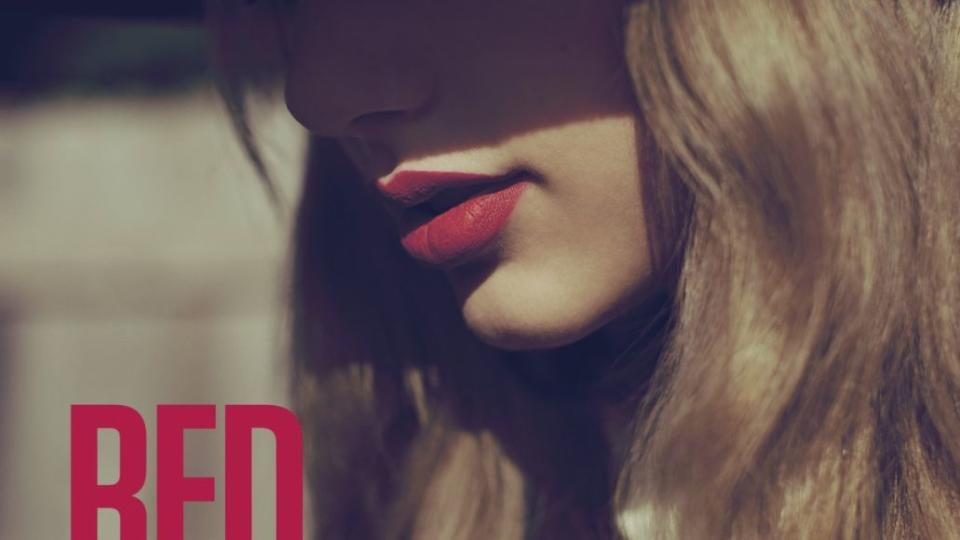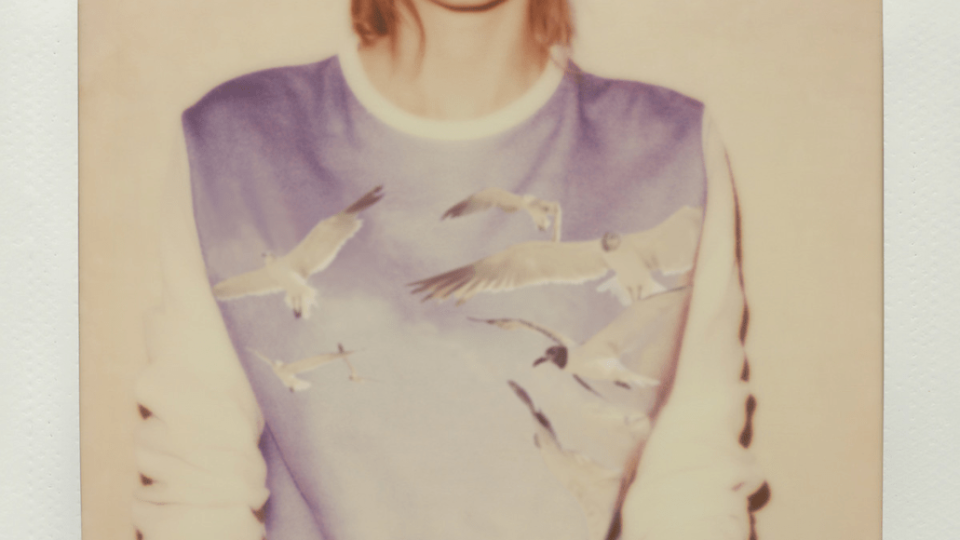Every Taylor Swift Album, Ranked From Worst to Best
- Oops!Something went wrong.Please try again later.
The post Every Taylor Swift Album, Ranked From Worst to Best appeared first on Consequence.
Welcome to Dissected, where we disassemble a band’s catalog, a director’s filmography, or some other critical pop-culture collection. This time, we take a look at Taylor Swift’s full discography in celebration of Midnights, released in October 2022.
All right, here’s the thing — ranking Taylor Swift‘s discography is not an easy task.
When considering a songwriter whose work spans so many different eras, it’s only to be expected that different people will have different personal connections to parts of her catalogue. I’ve written in the past that less stellar tracks from Swift can be treated like smudges on a crystal wine glass set — everything is still pretty beautiful, and often much better than collections that might be found elsewhere.
Swift’s journey from girl-next-door country act to pop star to woodsy poet has been over a decade, meaning her fan base has grown up with her. In recent years, folklore and evermore offered a chance for doubters to see Swift’s songwriting power on full display, but the truth is that her pen has always been her sword. Songwriting prowess is not new here — it’s just taken different forms as Swift has transformed from teenage wunderkind to a confident and careful adult.
For this ranking, we consulted Swift’s catalogue through a few different lenses. We dug into the album artwork (I Can Picture It), the best and worst tracks on the album (The 1 and Tolerate It, respectively), and analyzed her lead single rollout. Naturally, we highlighted lyrics from each album that feel like a personal attack (there are always a few), selected the best music video from each era (If This Was a Movie), and highlighted the best bridge from each collection (‘Cause Baby, I Could Build a Bridge). Our overall thoughts are summarized in the section marked Call It What You Want.
With Midnights, Taylor Swift Finds Grandeur in the Small Hours
Looking back, it’s pretty amazing that the very brave seventeen-year old, curly-headed girl who sat on the CMAs stage and bravely sang her debut single, “Tim McGraw,” to Tim McGraw himself would go on to be, arguably, the biggest pop star in the world for a time.
If you revisit that performance, though, you’ll see that Swift already has a certain boldness to her. She didn’t know just how long, difficult, wonderful, magical, and miserable the road ahead of her was, but she was ready for the adventure. Her life experience has always informed her work, and the result is a collection of stories that will be part of the pop culture landscape for a very long time.
Without further ado, our ranking — are you ready for it?
— Mary Siroky
Contributing Editor
10. Lover (2019)
Runtime: 60:01, 18 tracks
I Can Picture It: A stark reversal from the reputation era, the album art for Lover is all glitter and rainbows. Every photo around the album is draped in a hazy filter, often peppered with doodles and stickers. It felt like a bit too much of a juvenile move for Swift, who was approaching 30 at the time. The kaleidoscopic vision was intended to extend to Lover Festival, which fell victim to COVID.
The 1: What’s so frustrating about Lover the album is that “Lover,” the song, is arguably the best song Swift has ever written. It’s a perfect ballad and a lyrical masterwork, elevated here by strong production choices from Jack Antonoff. The minimalist touch makes the intimate nature of the song truly shine — everything feels open and inviting, as though Swift is performing it in the room herself.
Tolerate It: There are many misses on Lover (again, not fun to say, but the frantic “Paper Rings” and overdone, Google Maps-esque “London Boy” are far from Swift’s best work). Worst of all, widely agreed to be the biggest miss of her career, is the lead single, “ME!” featuring Brendon Urie of Panic! At the Disco. “ME!” was an utter disaster from the jump, and Swift’s attempt at damage control (removing the highly-ridiculed interlude of, “Hey, kids, spelling is fun!”) only brought more attention to the trainwreck. The song can be read as tongue-in-cheek, but the self-awareness didn’t come through to enough of a degree to save the song.
Why Wasn’t This the Lead Single?: Say it with me: Justice for “Cruel Summer!” It’s the brightest spot on the album, and Swift reportedly had plans for the track that were derailed, once again, by COVID. Perhaps the entire album experience would have been different if “ME!” hadn’t been its introduction; “Cruel Summer” has the kind of pop melody in the chorus that can’t be shaken. Swift is known for writing a great bridge, and “Cruel Summer” has one of her best. “He looks up grinning like a devil” has to be one of the most fun Swift lines to yell at the top of your lungs.
Lyrics That Feel Like a Personal Attack: “Who could ever leave me, darling?/ But who could stay?” This simple set of questions found on “The Archer” is the kind of tragic introspection Swift brings fully to life a few years down the road in folklore and evermore.
If This Was a Movie: “You Need to Calm Down” was a star-studded, fun event and rare foray into the political for Swift, but it’s, again, the magical title track that holds up as the best video from the Lover era. The primary color theme lands well here; Swift backup dancer and collaborator Christian Owens brings the titular lover to life in gentle, captivating fashion; it’s tender and just fantastical enough without losing the track’s groundedness. No notes!
‘Cause Baby, I Could Build a Bridge: Yes, once again, we are back to “Lover.” It’s the bridge that probably launched a thousand first dances at weddings: “My heart’s been borrowed and yours has been blue/ All’s well that ends well to end up with you/ Swear to be overdramatic (and true) to my lover.” Presumably, this was the mix of nostalgic, playful, and honest that Swift was going for elsewhere on the album. It works best here.
Call It What You Want: Ultimately, Lover isn’t a bad album — at all! It’s at the bottom because it was clear at this point at this point in her career that Swift could do so much better. It feels a bit too much like an unnecessary course correction from reputation, rather than a collection of themes Swift was really interested in pursuing. She has such a rich and interesting discography that the standards are sky high. — M.S.
09. Taylor Swift (2006)
Runtime: 53:29, 15 tracks
I Can Picture It: As with all her album art, the cover of Taylor Swift features, well, Taylor Swift. This one is understandably the most simple: Swift against a blue background, her shiny blonde hair in sharp focus. Her iconic signature floats above her portrait, hearkening back to the early days when all her album art used to feature her signature. No need to hound her for an autograph if it’s already there!
The 1: A teenage ballad about being in love with a friend who’s blissfully unaware of your feelings, “Teardrops on My Guitar” is classic teenage girl fodder. The lyrics are anomalously shade-free, and she’s surprisingly effective in the role: the soft relatability and delicate naivety of “Teardrops on My Guitar” allowed it to win the hearts of every youth girl suffering in the throes of unrequited love, and paved the way for future teenie boppers like Conan Gray and Olivia Rodrigo to soar with songs like “Heather” and “Driver’s License.” Taylor Swift was the blueprint.
Tolerate It: Melodically parched, lyrically unoriginal, thematically bare — “A Perfectly Good Heart” is by far the least memorable song on the album. Sure, the record as a whole was awash with unfortunate, forgettable cliches, but “A Perfectly Good Heart” sounds especially like a who’s-who of ‘90s acoustic pop radio: soulless, insignificant, and uninviting.
A guilt-trip of a song, a young Taylor tries to convince her man to stay by threatening him with guilt — the guilt she wants him to feel for breaking her previously-unscathed heart. Nice attempt at remaking “How Do I Live” country-style, but unfortunately, that LeAnn Rimes genius does not strike twice.
Why Wasn’t This the Lead Single? Unlike most of Swift’s other albums, the single choices on Taylor Swift made a lot of sense, ultimately because the rest of the album had nothing else groundbreaking to offer. You could argue, however, that “I’m Only Me When I’m With You” was robbed of the single treatment. One of her most pop-friendly hits on the album, “I’m Only Me When I’m With You” is classically upbeat Taylor, who has finally found a man who brings out the best in her.
It’s a sugary jingle about the joys of being with someone who brings out the real you, could’ve easily replaced “Should’ve Said No,” the unseemly, lyrically-clunky fourth single that I refuse to believe wasn’t shoehorned in. At least the instrumentals there were strong.
Lyrics That Feel like a Personal Attack: “The water’s high, you’re jumping into it/ And letting go and no one knows/ That you cry but you don’t tell anyone/ That you might not be the golden one” from “Tied Together With A Smile” are it. Ahh, youth.
If This Was a Movie: “Teardrops on My Guitar” takes it away here. Although the Taylor Swift era doesn’t offer much fine cinematography to choose from, “Teardrops on My Guitar” is an iconic video that matches the spirit of the times. It gets the point across effectively: For the duration, a doe-eyed Taylor finds herself absolutely starstruck around “Drew,” even at one point performing chemical experiments with no gloves and letting an explosion of toxic chemicals overflow onto her gloveless hands. Bet she didn’t even notice the chemical burn — Drew was right next to her (probably blabbering on about his girlfriend, though), and that was all that mattered. I’m sure we’ve all been there.
‘Cause Baby, I Could Build a Bridge: “Tim McGraw” was such keen songwriting from the very young Swift, and the bridge brings the story of the youthful romance within to a peak. Swift’s knack for great bridges was still in the making, and this era was critical in shaping that part of her skill set.
Call it What You Want: If you were somehow forced to describe the magic of Taylor Swift with a song or two, chances are you wouldn’t be picking anything from this album. A worthy debut, 2006’s Taylor Swift is just that, a debut — 15 tracks that, at the time, served to show everyone exactly what she had to offer, but was comfortable fading into the background once she came forth with more. There are a few timeless bangers — notably the scathing “Picture to Burn” — but ultimately, the appeal was in the relatability: Taylor was all of us.
Although there was nothing here to directly challenge the notion that she would be nothing but a one-hit wonder, Swift’s trademark narrative, one rooted firmly in musical catharsis, resonated precisely with the demographic. She, like the rest of us, wanted to have the last word. And she did — in the form of a million-dollar empire. — Valerie Magan
08. Midnights (2022)
Runtime: 44:02, 13 tracks
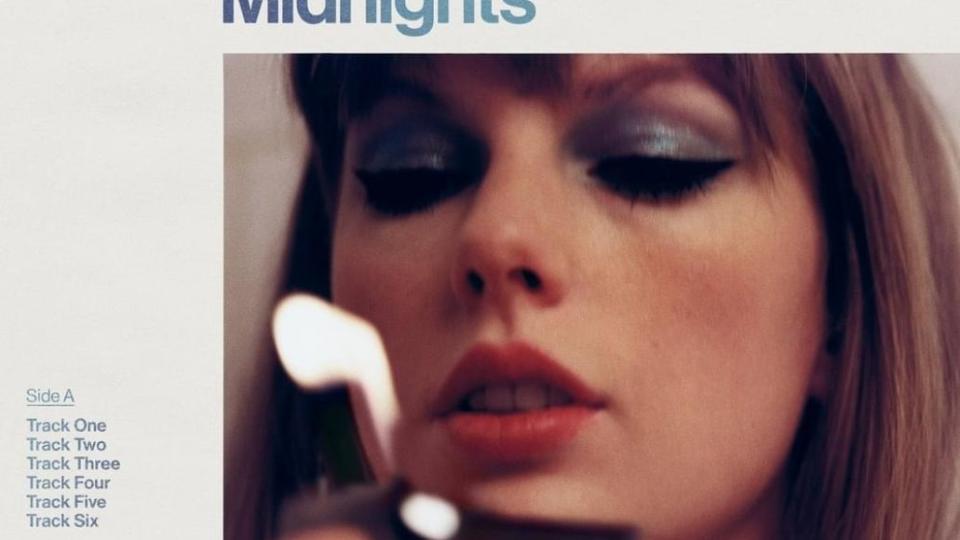
I Can Picture It: Before Swifties around the world had heard a single note, Taylor launched the rollout for Midnights by revealing the album’s nostalgic cover art. Featuring the pop icon holding a lighter in front of her face, the artwork signaled a vintage aesthetic with all 13 tracks listed on the front cover like an old vinyl record. Meanwhile, Swift’s downturned eyes covered in glittery shadow as she gazed wistfully at the open flame turned out to be cues for both the body of work’s sparkling, pop-driven sound and introspective songwriting.
the 1: There are more than a few contenders for the best song on Midnights — from opener “Lavender Haze” and “Anti-Hero” to closing track “Mastermind” and bonus cut “Would’ve, Could’ve, Should’ve” — but our money is on “You’re on Your Own, Kid,” a Track 5 treasure that melds the diaristic lyrics of Swift’s early work with the emotional heft she displayed on 2020’s folklore and evermore. The result is an utterly devastating portrait of the sacrifices and compromises the most driven among us make to write their own stories and color outside the lines with their dreams.
Tolerate It: On an album filled with tales from thirteen of Swift’s darkest nights, the dreamy production on “Labyrinth” drifts off almost to the point of being sleepy. And while Taylor’s refrain of “Breathe in, breathe through, breathe deep, breathe out” is certainly a comforting reminder, the song tends to get lost in its own cyclical maze.
Why Wasn’t This the Lead Single? Considering Tay first teased the existence of “Karma” more than two and a half years ago in the music video for “The Man,” it’s almost surprising she didn’t lead the Midnights rollout with the glinting, technicolor bop. That’s not to say “Karma” is anywhere near one of the strongest offerings on the album, either lyrically or musically, but some of its more inane metaphors (“Karma is a cat,” anyone?) would fit the precedent set by Swiftian eras past with lead singles that were either highly polarizing (reputation’s “Look What You Made Me Do”) or downright misfires (Lover’s “ME!”).
Lyrics That Feel Like a Personal Attack: “Sometimes I feel like everybody is a sexy baby/ And I’m a monster on the hill/ Too big to hang out/ Slowly lurching toward your favorite city/ Pierced through the heart but never killed.” Yes, it’s the lyric that set the Twitterverse abuzz, but the masses’ insistence on focusing on only the first line of the stanza cuts the metaphor Taylor’s making off right at the knees. Who among us hasn’t felt like the awkward, gangly outsider taking up too much space and threatening to ruin the vibe?
If This Was a Movie: Thus far, we’ve only been gifted with visuals for “Anti-Hero” and “Bejeweled,” and between the two we have to give the edge to the latter and its clever retelling of the classic Cinderella story. From cameos by Laura Dern and the Haim sisters as, respectively, House Wench Taylor’s Step Mommy and cruel step sisters to a plethora of Easter Eggs pointing to the superstar’s next re-recorded album (hint: it’s Speak Now), the visual is filled with plenty of gems — but it’s still Tay who ends up with the keys to the castle at the end.
Call it What You Want: At its core, Midnights is an exercise in the art of reflection, a dive down the path Swift’s mind takes when left to its own devices in the middle of the night. For even diehard fans, it’s also best approached as a slow burn that requires repeated listens to fully process. There’s no immediate smash like, say, “Shake It Off,” or years-old earworm she’s been hiding in the Vault like “Mr. Perfectly Fine.” Nor is there a dusted-off magnum opus like the 10-minute version of “All Too Well.”
Instead, Taylor opts to look back on some of the biggest and most intimate moments of her life with a level of maturity and mastery that only comes from spending the past 16 years in the spotlight perfecting her craft. Midnights may have been crafted under cover of darkness, but by the time the sun inevitably rises again, Swift will have only further cemented her status as one of the greatest songwriters of her generation. — Glenn Rowley
07. Speak Now (2010)
Runtime: 60:07, 14 tracks
I Can Picture It: Speak Now’s album cover is like a visual representation of the starry-eyed track “Enchanted,” complete with Swift twirling in a purple dress that in midair seems to dissolve into sparkles and glitter. She looks over her shoulder, ready to put several dudes in their place with her firm songwriting.
The 1: Among a record of takedowns and confessionals, “Long Live,” Swift’s love letter to the fantasy world her music created, has only gotten better with time. Its lyrics are as endearing as its production is massive, with reverberating guitars and thunderous cymbals gigantic enough to cover the entire kingdom Swift sings about fighting dragons in.
Tolerate It: It’s safe to assume Swift will never again write a song like “Better Than Revenge,” which seeks payback from a former partner’s new lover. She stoops low by trashing the subject’s sexual history and taste in vintage dresses, most likely in reference to Swift’s ex Joe Jonas’s then-girlfriend, Camilla Belle.
Why Wasn’t This the Lead Single?: Compared to the safe and reflective lead single, “Mine,” the seductive “Sparks Fly” fervidly showcased Swift’s maturing approaches to songwriting and romance. Imagine the country pop earthquake that could have occurred if fans were introduced to Speak Now through this track’s cinematic first line, “The way you move is like a full on rainstorm/ And I’m a house of cards.”
Lyrics That Feel like a Personal Attack: “So I’ll watch your life in pictures like I used to watch you sleep/ And I feel you forget me like I used to feel you breathe” — “Last Kiss”
If This Was a Movie: In its video, bluegrass-inspired “Mean” is a lighthearted and wholesome ode to bullying victims with bright futures. Chaos ensues as Swift’s stage transforms from a honky-tonk performance, to a vaudevillian scene, to an image of Swift “tied” to train tracks (she unties herself once her captors get too drunk) with anecdotes of victims’ torment interspersed throughout.
Cause Baby, I Could Build a Bridge: On “Back to December,” Swift drives home a genuine apology with a devastating bridge. It’s one of her first experiments with strings, which build urgency as she outlines her wrongs and regrets. When her words soften, the strings ease up, too. “But if we loved again, I swear I’d love you right,” she sighs.
Call It What You Want: Despite her enduring interest with childhood and fairy tales, a then 20-year-old Taylor Swift created Speak Now without any co-writers to be her most mature, confrontational and personal work yet. It set a precedent for the rest of her career, from her willingness to experiment with new instruments and textures (“Haunted;” “Mean”) to her bravery in writing intimate songs about public experiences and relationships (“Dear John;” “Innocent.”) These decisions formed some of Swift’s biggest fans and harshest critics, which makes Speak Now an essential facet of her magical story. — Natalia Barr
06. reputation (2017)
Runtime: 55:45, 15 songs
I Can Picture Out: reputation arrived during a time when it seems like Swift just couldn’t win — if she didn’t drink and party, she was wasting her youth. If she had fun dating and then used that to fuel her art, she was untrustworthy and promiscuous. If she was by herself, she was anti-woman, but when she assembled a veritable girl gang, she was accused of creating the exclusionary image of the mean girls table. reputation is Swift in black and white against the backdrop of tabloid headlines, an image that says it all.
The 1: For its many accusations of being off-brand or a reach for Taylor, reputation’s b-sides are gems that are true to her brand of honest and insightful songwriting. Perhaps the best among them is the sentimental, minimalist “New Year’s Day,” which sticks to the tried and true magic of Swift and her piano. It’s what people love most about her work: honesty, reliability, and just a touch of sweet nostalgia.
Tolerate It: For a group of notably strong writers and hitmakers, Swift’s collaboration with Ed Sheeran and Future falls flat. “End Game” feels forced, fitting Swift like an oversized sweater. Props for experimentation — there’s no fun in staying the same forever — but it was a misstep then and a forgotten part of her discography now.
Why Wasn’t This The Lead Single?: Swift came out swinging with “Look What You Made Me Do,” which featured remarkable self-awareness and addressed the constant hypocrisy she was facing. While it caught attention and prompted plenty of headlines, it’s not a great indicator of the album itself, which, again, isn’t as far of a cry from her brand as many like to think. Even so, “Delicate,” the clear standout from the album, might’ve been a better move — reputation was also noteworthy in that it featured Swift’s foray into outright sensuality, and “Delicate” is a great summary of those elements of the album.
Lyrics That Feel Like a Personal Attack: “This ain’t for the best/ But my reputation’s never been worse, so/ You must like me for me” — heartbreaking! Swift is one of those people who is famous in an otherworldly, almost unfathomable way, meaning it was nearly impossible for her to spend time with a romantic interest without questioning intentions. This line from “Delicate” somehow doesn’t make the trappings of fame feel inaccessible or unrelatable.
If This Was a Movie: The music video for “Delicate” is lovely and vaguely cinematic, directed by longtime, trusted Swift collaborator Joseph Kahn. “Look What You Made Me Do,” though, addressed the vitriol being directed her way in such a straightforward manner that even her most vocal detractors have to acknowledge its cleverness.
Cause Baby I Could Build a Bridge: “Call It What You Want,” an underrated treasure from reputation, blends romance and autonomy in a modern and alluring way. “I want to wear his initials in a chain round my neck, chain round my neck/ Not because he owns me, but ’cause he really knows me/ Which is more than they can say.”
Call It What You Want: If it’s been a while since you revisited reputation, take this as your sign to do so. It holds up better than anyone might’ve expected upon release, and was perhaps a necessary part of her artistic journey. Swift was justifiably angry at the time, and while every slightly edgy beat might not have landed, the final product is more authentic than initial reviews claimed. Isn’t that very authenticity what drew so many to Swift in the first place? — M.S.
05. Fearless (2008)
Runtime: 53:41, 13 tracks
I Can Picture It: Swift’s second album shows the singer at headshot-distance, head to one side and curly blond hair fanned up around her. It’s an iconic image for its recognizability, and — like the music on the album — a natural companion to Speak Now, but marks the least transformation as far as Swift’s covers go and does less than usual to signal what the album’s songwriting is interested in.
The 1: Swift wrote Fearless in high school, while experiencing crushes, ambition and uncertainty firsthand. “Fifteen,” a song about being, uh, fifteen and growing up written by someone currently going through it, is also a song where many of Swift’s superpowers align: her lyrical detail, her instinct to draw power from yearning, and her ability to transform her own experiences into universal access points for compassion and counsel.
Tolerate It: “Hey Stephen” is a sweet, catchy song about a crush, but its repetitive melody makes it the least compelling song on Fearless to listen to over and over again. It also makes use of some of Swift’s favorite cliches without as much of her usual effort to turn them on their head or build them out into something more particular.
Why Wasn’t This the Lead Single?: Honestly, there could be worse travesties in life than having “Love Story” as the lead single for the album you made when you were eighteen; Fearless is one of those instances where Swift made the right choice. But “The Way I Loved You” is the song that most deserves lead-single-level hype and never got it; its cleverly tilting verses and relentless chorus cut to the core of the immersive pop-country-rock that Swift’s first few albums are so good at.
Lyrics That Feel Like a Personal Attack: “In your life you’ll do things greater than/ Dating the boy on the football team/ But I didn’t know it at fifteen” — “Fifteen”
If This Was a Movie: Swift’s videos work best when they lean into her love for storytelling. In “You Belong With Me,” the easy-to-follow story of neighbors holding up signs from their windows, Swift’s dual role as the mean cheerleader and the girl dancing in her room, the marching band jumping with the chorus, and the hypnotizing slow-motion moments of the football game, all elevate the video and help it craft an effect that’s charming and electrifying at once.
‘Cause Baby, I Could Build a Bridge: The way the bridge in “Love Story” collapses into the tense breakdown before the final chorus is transformative — carefully drilling up the tension while bringing the listener convincingly from “My faith in you was fading/ When I met you on the outskirts of town” to “Marry me, Juliet,” in the span of seconds.
Call It What You Want: Swift already had songs stored up that she’d written previously, which lends Fearless a sense of regularity, but the album also marked her debut as a record producer and saw her exploring relationships with family members, friends (both fake and real), and her own ambitions, in addition to the crushes and boyfriends that discussions about her music tend to fixate on. It came at a point when her earnestness and intuition for country-pop were the main tools she had to work with; although her most inventive and exploratory albums to date would come later, it stands alone as a well-crafted album that finely encapsulates the experience of being a teenager. — Laura Dzubay
04. evermore (2020)
Runtime: 60:38, 15 tracks
I Can Picture It: Gorgeous in its simplicity just like the songs in the album, the evermore cover photo shows the back of a French-braided Taylor Swift facing a field; but instead of ignoring whoever is behind her, it looks more like she’s inviting the listener to see the field through her eyes.
The 1: There are more memorable melodies in evermore, but Swift’s lyrical approach makes “tolerate it” a song for which this album can be remembered. It’s everything a notorious Track 5 on a Taylor Swift album is expected to make the listener feel. Lyrics like, “Lay the table with the fancy shit and watch you tolerate it” will go down as some of her most brilliant.
Tolerate It: While it has some of the best lyrics (“We were like the mall before the Internet/ It was the one place to be”), “coney island (feat. The National)” blends way too well for its own good into the melodic landscape of evermore, to the point that it doesn’t quite stand out.
Why Wasn’t This the Lead Single?: “gold rush” brings ambient music elements, folk, and pop all in one song. It has an ethereal intro, a livelier verse, and a sparkling chorus. It would have been a good summary of what Taylor Swift, the prolific singer-songwriter but also the performing pop star, can do.
Lyrics That Feel like a Personal Attack: “I know my love should be celebrated/ But you tolerate it” — “tolerate it”
If This Was a Movie: Aside from lyric videos, “willow” was the only evermore song to receive a video. Should one judge the entire album by this, they’d think it’s dreamier and brighter than it is in reality. But the fairytale aesthetics are perfect for the song itself, with hints at other Swift songs helping make it an engaging experience.
‘Cause Baby, I Could Build a Bridge: When the bridge of “champagne problems” comes, it’s like a rush of the beverage to the head. It’s not just affective memory driven by the chord progression — this bridge has its own merit. It’s the final string holding Swift down; she delivers her best lyrics and performance there.
Call It What You Want: evermore had the difficult task of living up to the legacy of what can be considered a songwriting masterclass, folklore. It didn’t score as high, but it didn’t disappoint, either. The feeling of a leftovers album is inevitable; however, even a Taylor Swift leftover is a gem, so evermore was more than enough to bring her back “stronger than a ’90s trend.” Swift revisits her country sound in “no body, no crime” and “cowboy like me,” proves herself a great pop composer in “willow” and “‘tis the damn season,” and delivers impeccable storytelling and lyricism in every song. — Ana Clara Ribeiro
03. Red (2012)
Runtime: 60:04, 16 songs
I Can Picture It: On Red, Taylor Swift traded in sparkly ballgowns for retro-high-waisted cool. The album marks tectonic shifts in Swift’s music, reflected in her appearance — she straightened and darkened her bouncy blonde curls, and got bangs, a classic youthful breakup move for a classic youthful breakup album. Swift served as creative director, and the cover image is her face in semi-profile, eyes downcast and shaded by a wide-brimmed festival hat, the focus on her red lips.
After critic Bob Lefsetz, the subject of “Mean” who insisted she can’t sing, famously condescended to Swift that she go listen to Joni Mitchell immediately, is it any coincidence that Red’s image and title recall and recast Blue? Whatever you dish out to Swift, she can not only take it, but might just metabolize it into her next work.
The 1: On an album flush with excellent songs, “All Too Well” and “Begin Again” are gleaming examples of Swift’s specific gift for channeling small moments, objects, and feelings into transcendence. These are pop songs of airtight structure and vulnerable, clever lyrics — all at once mournful, resilient and catchy as hell.
Tolerate It: Bonus track “Girl At Home” is the rare okay-but-nah moment for Swift. It’s flippant and less self-aware than her other work, but there’s an opportunity when she re-records to expand and shift the song’s perspective.
Why Wasn’t This the Lead Single?: Red might be the album cycle where Swift nailed the lead single: “We Are Never Ever Getting Back Together,” an inclusive singalong laced with self-deprecating humor, a filtered acoustic riff with a pop beat that eases listeners into the Max Martin/Shellback collab. “All Too Well” didn’t need to be a single for fans to demand it. But “State of Grace” would have been an excellent single: Solo-penned by Swift, drawing from U2-esque arena rock, it’s all about the triumphant build.
Lyrics That Feel like a Personal Attack: “Some indie record that’s much cooler than mine.” The self-deprecating sarcasm on “We Are Never Getting Back Together” is both vulnerable and a major flex. Let us not forget about her gifts, her power, her capacity to continually reinvent while remaining herself.
‘Cause Baby, I Could Build a Bridge: “All Too Well,” perhaps the ultimate Track 5, is the reason that this category exists, the bridge that cements Swift’s position as a master of pop craft. What makes it special is Swift’s specificity and honesty. One of the first songs written for Red, this slow-build anthem was ad-libbed in a rehearsal, originally ran ten minutes and included rare profanity for Swift. It’s a meditation on totems of ex-love that we hold onto, that hold us in place.
But the memories and emotions keep rushing faster until the three-minute mark — “Maybe we got lost in translation, maybe I asked for too much.” Just when you think the song has crossed into the final movement, the bridge itself is demolished in the torrent. Swift breaks back in, louder, less in control, a register higher: “You call me up again just to break me like a promise/ So casually cruel in the name of being honest!” — telling the whole story in two of the most devastating lines she’s written, a crescendo that proclaims the past isn’t past.
If This Was a Movie: “22” features all-gal hijinks with the original “squad.” With her “Not A Lot Going On at the Moment” t-shirt and charmingly awkward dance moves, Swift comes off cool, funny, and a good hang. The video culminates in an aspirational teen party scene, complete with a fully-clothed leap into a swimming pool — the visual equivalent of the song’s giddy shout-along.
Call It What You Want: Red is Swift’s major before and after, celebrating her transition between country and pop — punctuated with a literal bass drop. (Which was her idea, by the way.) Swift refers to Red as her “splatter-paint record,” because she experimented — collaborating with new producers and pop wizards, using software as an instrument, and incorporating wider-ranging sounds. Though critics might have called her adoption of trendy elements “calculated,” Swift pushed these ideas forward.
From one song to the next, Red flips between gut-wrenching country ballads, dubstep kiss-offs, gang-vocal pop bops — but that sonic whiplash embodies the messiness of truly breaking up and growing up. On her fourth album, Swift was already facing down her mortality, and Red is clearly the work of not a talented ingenue but a full-fledged artist who was always meant to fly. This growth is difficult and hyper-emotional, but often a hell of a good time. Red is the minor fall, the major lift, the epiphany that vaults the listener from one side of your life to the other. — Katie Moulton
02. 1989 (2014)
Runtime: 48:47, 13 tracks
I Can Picture It: It’s interesting that out of her many album covers, 1989 feels the most quintessentially Tumblr-era Taylor Swift. It’s a polaroid of her (at the time) signature red lipstick and a lavender sweater, with the album name scrawled across in sharpie. Swift is known for connecting with her fans on a deeply personal level for someone so famous, and 1989 (her birth year, of course) conjures that homegrown feeling. Interestingly, it’s not all too indicative of the pop opus inside.
The 1: Let’s face it — “Style” is a perfect pop song. Beyond the fact that it’s absurdly catchy, “Style” doesn’t skimp on the storytelling, painting a portrait of the highly public relationship that was destined for high-profile disaster. It’s no secret that the majority of 1989 was written about Swift’s relationship with a certain British brunette former boy band member, and “Style” is one of the best (albeit thinly-veiled) products of the fallout.
Tolerate It: Again, 1989 is the product of some of Swift’s most confident songwriting, and “I Know Places” is perhaps the only one that gets lost in the shuffle. It’s perfectly adequate, if a bit forgettable, and when the bar is so high for the New York City dreamscape Swift built in 1989, this is one that fails to rise to the top.
Why Wasn’t This the Lead Single?: “Shake It Off” was an accurately poppy introduction to the album, but doesn’t hold up as well as subsequent singles — “Blank Space” in particular. On the song’s excellent bridge, she drawls, “Boys only want love if it’s torture/ Don’t say I didn’t, say I didn’t warn ya.” The video sees Taylor delightfully melodramatic, and the lyrics are similarly over-the-top. With a co-writer like Max Martin, the indulgent track was in the right hands, and this song might’ve kicked off the 1989 era with even more enthusiasm.
Lyrics That Feel Like A Personal Attack: “Out of the Woods” is remembered by Swifties as an underrated treasure (as they should!), which makes it hard to select a standout lyric. Let’s try this one on for size, though: “Your necklace hanging from my neck/ The night we couldn’t quite forget/ When we decided, we decided/ To move the furniture so we could dance/ Baby, like we stood a chance/ Two paper airplanes flyin.”
If This Was a Movie: “Bad Blood” was The Avengers of music videos. The rollout, a never-ending lexicon of A-listers, was surreal; the final product broke the internet. Real-life inspiration aside (looking at you, now-buried Taylor Swift/Katy Perry feud), the resulting music video is just fun. Selena Gomez and Zendaya deserve the world, and that’s that on that.
Call It What You Want: What is there to really say about 1989 that hasn’t already been said? Red was a place where Swift blended her country roots with her pop star leanings, and with 1989, she allowed herself to go all the way. It’s rightfully beloved, a lasting triumph of pop songwriting, self-awareness, shimmering production, and a woman using her voice. — M.S.
01. folklore (2020)
Runtime: 60:03, 16 tracks
I Can Picture It: folklore’s black-and-white album art is the first to put Swift in a larger context. Surrounded by trees much taller than she is, she is in the shot, but far removed from the camera, and her gaze seems to be fixed on something distant above her head — as though she’s considering, in the words of poet Mary Oliver, her place in the family of things.
The 1: It feels torturous to choose one “best” song in an album as stacked as folklore, but for our money, the album’s sharpest and most vivid songwriting comes in the form of “betty,” a harmonica-backed neo-folk song about the messiness of teenage love. It has the immediacy of the songs that Swift wrote when she herself was a teenager, but with an added dose of the perspective and wisdom that comes with age.
Tolerate It: “peace” simply falls short when pitted against the rest of the stacked deck that is the folklore track list. While Swift mentioned in a Rolling Stone interview that “peace” is the most personal track on folklore, written about her mostly-private relationship with boyfriend Joe Alwyn, its ponderous pace and weird, muted R&B vibes put it out of step with the rest of the album.
Why Wasn’t This the Lead Single?: “mirrorball” was robbed. This lush and vulnerable song serves as a self-aware reflection (pun intended) on the trappings of fame, and how difficult it becomes to separate one’s selfhood from the people-pleasing behavior that becomes second nature for anyone who has been in the spotlight for as long as Swift. Even though Swift’s level of fame is not a relatable experience, she is as skilled as ever in positioning herself as the underdog and making you root for her.
Lyrics That Feel Like a Personal Attack: “Don’t call me kid/ Don’t call me baby/ Look at this idiotic fool that you made me/ You taught me a secret language/ I can’t speak with anyone else” — “illicit affairs”
If This Was a Movie: Potentially due to the restrictions posed by the pandemic, “cardigan” is the only folklore track that received the fully-produced music video treatment. The video doesn’t disappoint, however, finding Swift climbing through the back of a piano into a fantastical world — a metaphor, perhaps, for the escapism that she hoped folklore would provide during the mundanity and uncertainty of a pandemic summer. Released in tandem with the album, the video for “cardigan” set the tone for how Swift wanted listeners to experience her newest collection of songs.
‘Cause Baby, I Could Build a Bridge: They’re all gold on folklore, but the bridge from “mirrorball” is undeniable: “And they called off the circus/ Burned the disco down/ When they sent home the horses/ And the rodeo clowns/ I’m still on that tightrope/ I’m still trying everything to get you laughing at me/ I’m still a believer, but I don’t know why/ I’ve never been a natural/ All I do is try, try, try/ I’m still on that trapeze/ I’m still trying everything/ To keep you looking at me.”
Call It What You Want: folklore dropped from the sky during what everyone can agree was a weird time, and the euphoria of stepping into Swift’s lush, fully-realized world was one of the few truly good things to come out of the dark morass of 2020. With the help of some of the most well-respected musicians in indie rock over the last 15 years, our girl created something that was nonetheless unmistakably hers. The use of fictional characters and storylines, while not entirely new territory for Swift, was a marked departure from her last several releases, and it allowed her to grow in ways that were as fulfilling to watch as they were satisfying to listen to. — Katherine Flynn
Every Taylor Swift Album, Ranked From Worst to Best
Mary Siroky and Consequence Staff
Popular Posts
Leslie Jordan Killed in Car Crash After Suffering Medical Emergency
All 275 Songs Jack Antonoff Has Produced, Ranked From Worst to Best
Kid's Impressive Street Performance of "Master of Puppets" Earns Props from Metallica: Watch
Andy Dick Arrested for Felony Burglary After Allegedly Stealing Power Tools

